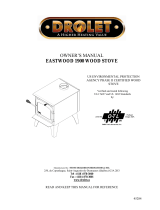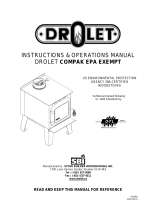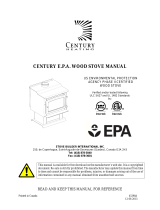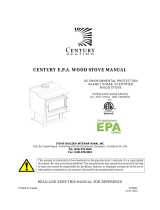
2
TABLE OF CONTENTS
INTRODUCTION ........................................................................................................................ 3
TECHNICAL SPECIFICATIONS ................................................................................................ 4
TIPS ON WOOD HEATING ....................................................................................................... 6
ASSEMBLY ............................................................................................................................... 7
BALTIC...................................................................................................................................... 7
AUSTRAL, LEGEND AND MYRIAD ......................................................................................... 8
DOOR ADJUSTMENT .............................................................................................................. 9
INSTALLATION ....................................................................................................................... 10
POSITIONING THE STOVE ................................................................................................... 10
CLEARANCES TO COMBUSTIBLES AND FLOOR PROTECTOR ........................................ 11
Floor protector ......................................................................................................................... 13
Reduced clearances using shielding ....................................................................................... 13
CHIMNEY ................................................................................................................................ 18
CHIMNEY CONNECTOR ........................................................................................................ 19
DRAFT .................................................................................................................................... 21
TYPICAL INSTALLATIONS .................................................................................................... 22
OUTSIDE COMBUSTION AIR ................................................................................................ 26
WOODSTOVE UTILISATION .................................................................................................. 27
TESTING YOUR WOOD ......................................................................................................... 28
THE FIRST FIRES .................................................................................................................. 28
IGNITION ................................................................................................................................ 28
HEATING ................................................................................................................................ 29
RELOADING ........................................................................................................................... 30
CREOSOTE FORMATION AND NEED FOR REMOVAL ....................................................... 30
USE OF THE BYPASS DAMPER ........................................................................................... 31
ASH DISPOSAL ...................................................................................................................... 31
FAN (BLOWER) OPERATION ................................................................................................ 32
MAINTENANCE ....................................................................................................................... 33
GLASS .................................................................................................................................... 33
GASKETING ........................................................................................................................... 33
PAINT ..................................................................................................................................... 34
CHIMNEY ................................................................................................................................ 34
BRICK LAYOUT ...................................................................................................................... 35
DROLE LIMITED LIFETIME WARRANTY ........................................................................... 36
REGISTER YOU WARRANTY ONLINE
To receive full warranty coverage, you will need to
show evidence of the date you purchased your
stove. Keep your sales invoice. We also
recommend that you register your warranty online
at http://www.drolet.ca/en/service-
support/warranty-registration
Registering your warranty online will help us track
rapidly the information we need on your stove.





























